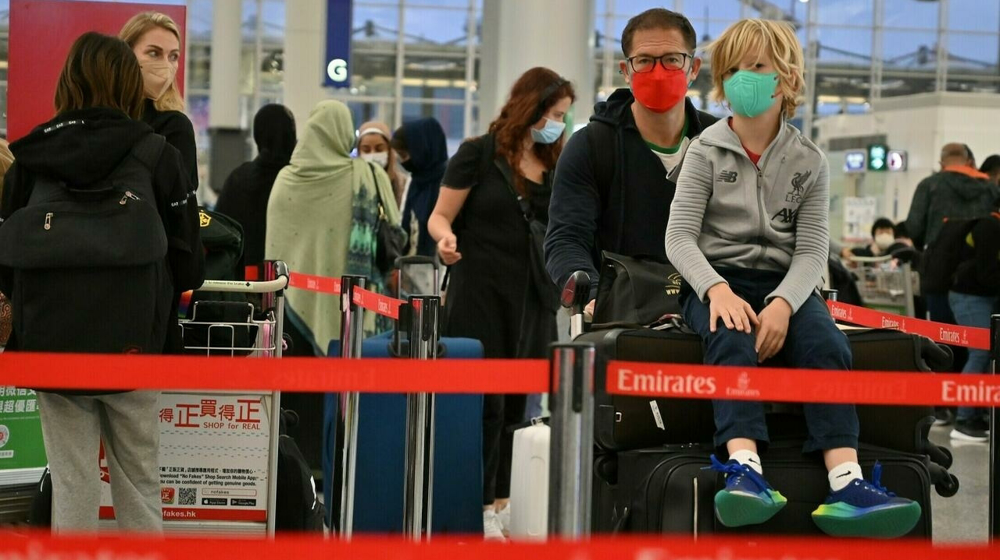Millions locked down as China wrestles worst virus outbreak in two years
China has placed millions of people under lockdown to stem a surge in coronavirus infections, following a two-fold rise in the number of cases nationwide to nearly 3,400.
The southern tech hub of Shenzhen was put under a citywide lockdown on Sunday after it reported 66 new coronavirus cases and sealed off the central business district. The country struggles with its gravest outbreak in two years.
The city of around 17 million told its residents to stay home to eradicate an Omicron flare-up linked to neighboring COVID-hit Hong Kong, following an earlier ban on non-essential venues in recent days.
The lockdown and a suspension of public transport will last until March 20, a city government notice said, adding that it would launch three rounds of mass testing. “If prevention and control is not strengthened in a timely and decisive manner, it could easily become large-scale community transmission,” Shenzhen health official Lin Hancheng said at a press briefing.
The nationwide surge has prompted authorities to close schools in Shanghai and lock down multiple northeastern cities. Some 18 provinces battle clusters of the Omicron and Delta variants.
The city of Jilin — center of the outbreak in the northeast — was partially locked down Saturday, while residents of Yanji, an urban area of nearly 700,000, bordering North Korea, were confined to their homes Sunday.
Zhang Yan, an official with the Jilin provincial health commission, said local authorities’ virus response so far had been lacking. “The emergency response mechanism in some areas is not robust enough, there is insufficient understanding of the characteristics of the Omicron variant … and judgment has been inaccurate,” he said at a press briefing.
The neighboring city of Changchun - an industrial base of nine million people - was locked down Friday, while at least three other small cities have been locked down since March 1.
The mayor of Jilin and the head of the Changchun health commission were dismissed from their jobs Saturday, state media reported, in a sign of pressure placed on local authorities to contain virus clusters.
China, where the virus was first detected in late 2019, has maintained a strict ‘zero-Covid’ policy enforced with swift lockdowns, travel restrictions and mass testing when clusters have emerged. But the latest flare-up, driven by the highly transmissible Omicron variant and a spike in asymptomatic cases, is challenging that approach.
Chinese officials urge softer and more targeted measures to contain the virus, while economists warn that tough clampdowns are hurting the economy.
China’s biggest city, Shanghai, has so far been spared a citywide order to stay home, but individual housing compounds were being locked down as the megacity ramped up efforts to contain infections and test suspected close contacts. Authorities also moved to temporarily lock down individual schools, businesses, restaurants and malls over close-contact fears rather than mass quarantines. They also said Sunday that people cannot leave or enter Shanghai without a negative test taken in the past 48 hours.
Long lines have been seen outside hospitals in Shanghai as people rush to obtain a negative Covid test. The city, which has a large population of migrant workers, shares a land border crossing with Hong Kong, where the caseload over recent weeks has soared, alarming officials in Beijing. Hong Kong currently has one of the world's highest death rates from the virus, as the Omicron variant cuts through its elderly population among whom vaccine hesitancy proliferates.

China condemns ‘unilateral and arbitrary’ US tariffs

China warns US, India after Trump surge in arms sales to New Delhi

US makes debut passage through Taiwan Strait under Trump's new administration
US official vows to imprison pro-Palestine protesters for years
Arab states condemn Israel's new aggression against Syria
IRGC adds homegrown warship, fast attack craft to naval fleet
VIDEO | Press TV's news headlines
Over 700 bodies recovered in Gaza, most remain unidentified
VIDEO | US TikTok ban
Palestinian youth succumbs to injuries sustained in West Bank strike
US Attorney General hints at Epstein files release amid skepticism









 This makes it easy to access the Press TV website
This makes it easy to access the Press TV website